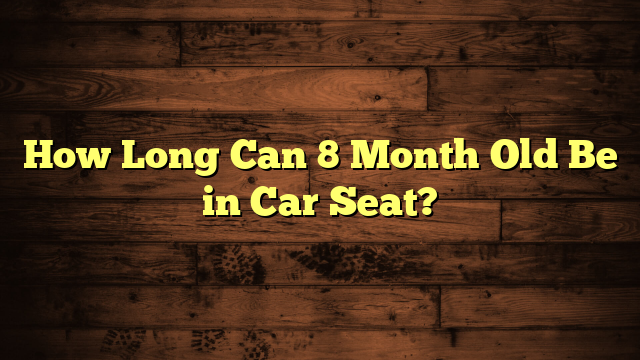What Kind of Car Seat for a 4 Year Old?
You might be surprised to learn that many parents underestimate the importance of a properly chosen car seat for their 4-year-old. While it may seem straightforward, selecting the right type involves understanding various safety features and regulations. It's not just about comfort; the right seat can greatly impact your child's safety in the event of an accident. As your child grows, the options can become a bit confusing, raising the question of when and how to make that vital shift. What should you prioritize to guarantee your child travels safely?
Key Takeaways
- A forward-facing car seat with a five-point harness is recommended for enhanced safety for 4-year-olds.
- Ensure the car seat complies with local regulations regarding weight and height limits.
- Consider transitioning to a booster seat around age 4 and 40 pounds for proper seat belt fit.
- Choose a car seat with side-impact protection features for added safety during travel.
- Regularly check the car seat's installation, recalls, and maintenance to ensure ongoing safety and hygiene.
Understanding Car Seat Types
When choosing a car seat for your 4-year-old, it's essential to understand the different types available. At this age, you'll typically find three options: rear-facing seats, forward-facing seats, and booster seats.
While rear-facing seats are generally recommended for younger children, most 4-year-olds will shift to a forward-facing seat with a harness, which provides enhanced safety.
As you explore car seat types, keep in mind the specific car seat regulations in your area. These laws can dictate not just the type of seat but also the height and weight limits required for safe installation.
Installing the car seat correctly is critical for your child's safety, so make certain you follow the manufacturer's instructions closely. Many parents find it helpful to consult local resources or even certified car seat technicians for guidance.
Once your child outgrows the forward-facing seat, a booster seat becomes necessary. It elevates your child, allowing the vehicle's seat belt to fit properly across their lap and shoulder.
Understanding these options will help you make an informed decision, making sure your child is safe and secure on every ride.
Safety Features to Consider
Several essential safety features should be on your checklist when selecting a car seat for your 4-year-old. First, look for harness systems with a five-point configuration, which keeps your child securely restrained. These harnesses distribute crash forces evenly across the body, reducing injury risk during a collision.
Make certain the harness is easy to adjust as your child grows, guaranteeing a snug fit every time you buckle them in.
Next, check for crash test ratings. Many car seats undergo rigorous testing to meet or exceed safety standards. Look for seats that have been independently tested for performance in various crash scenarios. This information can often be found on the manufacturer's website or safety review sites.
Additionally, consider side-impact protection features, which can help shield your child in the event of a side collision. Some models come equipped with energy-absorbing foam and reinforced sides for added security.
Lastly, always verify the car seat is compatible with your vehicle and follow the installation guidelines carefully.
Comfort and Fit for Your Child
Choosing a car seat that prioritizes safety is only part of the equation; ensuring your child's comfort and fit is just as important. A well-fitted car seat not only keeps your little one safe but also makes the ride more enjoyable for them.
Look for a seat that allows for proper positioning of your child. Their back should be flat against the seat, and their knees should bend comfortably at the edge without any pressure.
Adjustable straps are essential for achieving this fit. As your child grows, you'll want to modify the straps to accommodate their height and weight. This flexibility helps maintain proper positioning while providing a snug fit that won't cause discomfort during longer trips.
Consider the seat's padding and materials as well; breathable fabrics can help prevent overheating.
Also, check if the seat reclines slightly for added comfort, especially during nap times. Remember, a comfortable child is a happy traveler, and ensuring they feel secure in their seat can make all the difference during your journeys together.
Ultimately, when you prioritize comfort alongside safety, you create a positive travel experience for both you and your little one.
Transitioning to a Booster Seat
At around four years old, many children are ready to change to a booster seat, which offers a great balance between safety and independence. This shift is vital for guaranteeing your child is properly secured in the vehicle.
Booster seats elevate your child, allowing the car's seat belt to fit correctly over their lap and shoulder. This positioning greatly reduces the risk of injury in an accident, showcasing one of the primary booster seat benefits.
Before making the switch, it's important to familiarize yourself with booster seat regulations. These guidelines vary by state, so always check local laws to confirm compliance.
Generally, children should move to a booster seat once they outgrow their forward-facing car seat, usually around 40 pounds and 4 years old.
When selecting a booster seat, look for models that meet safety standards and have a good reputation for performance. Features like a high back or adjustable headrest can enhance comfort and safety.
Frequently Asked Questions
What Is the Weight Limit for Car Seats for 4-Year-Olds?
When considering weight limits for car seats, you'll find they vary by model. Always check the manufacturer's specifications to guarantee they meet current safety standards and provide the best protection for your child.
Can I Use a Second-Hand Car Seat for My Child?
You can use a second-hand car seat, but check its history. Verify it meets current safety standards, hasn't been involved in accidents, and isn't expired. Your child's safety depends on understanding these factors.
Are There Car Seats Specifically Designed for Tall Children?
Yes, there are tall car seats and booster seats designed for taller children. These options provide extra height and support, ensuring your child stays safe and comfortable while growing. Always check weight and height limits before purchasing.
How Do I Clean and Maintain a Car Seat?
To keep your car seat in top shape, focus on car seat cleaning and maintenance. Regularly vacuum the fabric, wipe down surfaces with mild soap and water, and check straps for wear or damage.
What Are the Regulations for Car Seats in My State?
Did you know nearly 60% of car seats are installed incorrectly? To guarantee your child's safety, check your state's car seat laws and follow safety guidelines for proper usage and installation, keeping them secure during every ride.
Conclusion
Choosing the right car seat for your 4-year-old isn't just about compliance; it's about safeguarding your little one on every journey. Picture your child securely harnessed, cocooned in a protective shell, ready to explore the world outside your windows. As they grow, moving to a booster seat will guarantee the seat belt hugs them just right. By prioritizing safety and comfort, you're not just protecting them; you're giving them the freedom to enjoy the ride.
- Can I Get in a Taxi Without a Car Seat? - January 26, 2025
- Can I Get Chlamydia From a Toilet Seat? - January 26, 2025
- Can I Get an Uber With a Car Seat? - January 26, 2025






